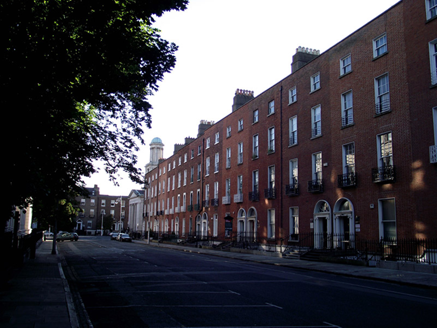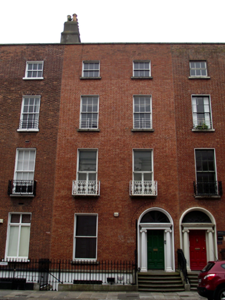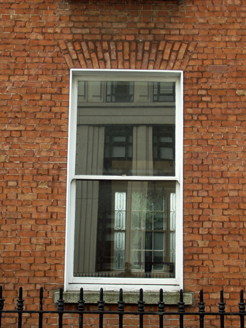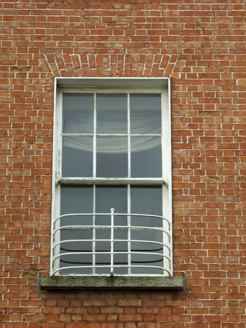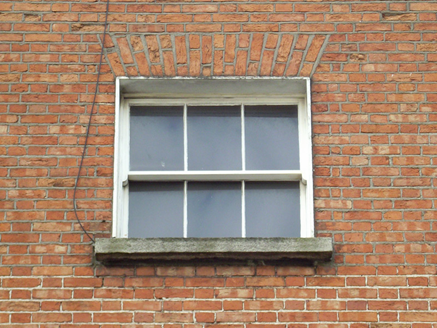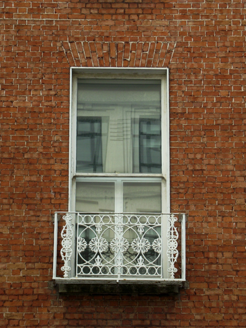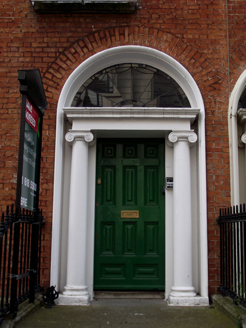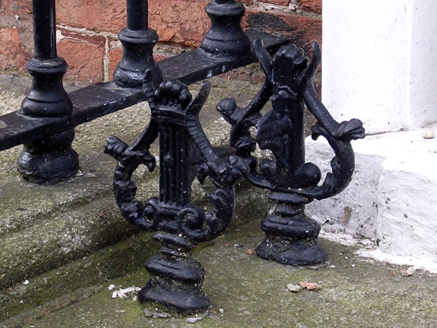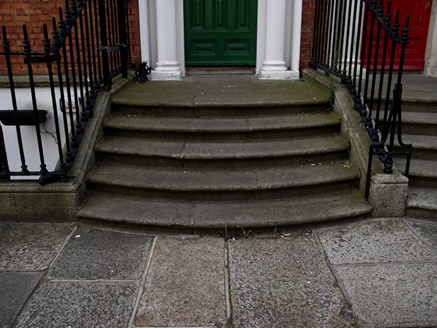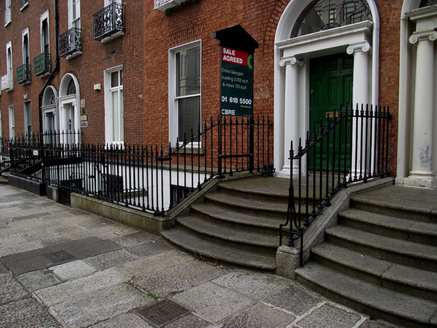Survey Data
Reg No
50100651
Rating
Regional
Categories of Special Interest
Architectural, Artistic
Original Use
House
In Use As
Office
Date
1830 - 1850
Coordinates
316983, 233191
Date Recorded
01/07/2016
Date Updated
--/--/--
Description
Attached two-bay four-storey former house over basement, built c. 1840 as one of terrace of five (Nos. 7-11) within longer row of similar houses, and having two-storey return and addition to south end of rear. Now in commercial office use. M-profile roof, hipped to south end of rear span, having blind brick parapet with masonry coping, parapet gutters, and rendered shouldered chimneystacks with terracotta pots to north. Flemish bond mid-red brick walling on granite plinth course over painted rendered basement walling; rendered to rear. Square-headed window openings, diminishing in height to upper floors, having patent reveals, granite sills and brick voussoirs. Timber sliding sash windows, generally with cavetto horns, one-over-one pane to ground and first floors, six-over-six pane to second floor, replacement three-over-three pane to top floor, and fifteen-over-ten pane to basement. Secondary glazing to basement and first floor. Decorative cast-iron balconettes to first floor, wrought-iron window-guards to second floor, and steel grille to basement. Timber sash windows to rear, three-over-three pane to top floor, south bay having eight-over-eight pane window to second floor and tripartite six-over-six pane below. Round-headed doorway with render surround and painted masonry doorcase comprising pro-style Ionic columns, plain entablature, leaded batwing fanlight and eleven-panel timber door with brass furniture. Granite entrance platform with decorative cast-iron boot-scrape and five convex bull-nosed granite steps. Basement area enclosed by decorative cast-iron railings on moulded granite plinth, with cast-iron gate. Plain square-headed door and window openings beneath entrance platform. Garden to rear, with modernized two-storey rubble stone mews building and yard to rear of plot.
Appraisal
A mid-nineteenth-century row house, built in the Georgian style, displaying well-balanced proportions and the graded fenestration pattern typical of the period. The house, along with the wider terrace and row, is attractive and relatively well retained with original features, including a good Ionic doorcase, unusual convex entrance steps and a rubble stone mews building. The facade is further enhanced by the ornate balconettes to the first floor. The intact setting, with decorative railings and boot-scrape, contributes to the character of this handsome row lining the east side of street, and to the wider historic core of south Dublin city. Linking Mount Street Crescent to Lower Baggot Street, this street was laid out by Sydney Herbert from the early 1830s.
